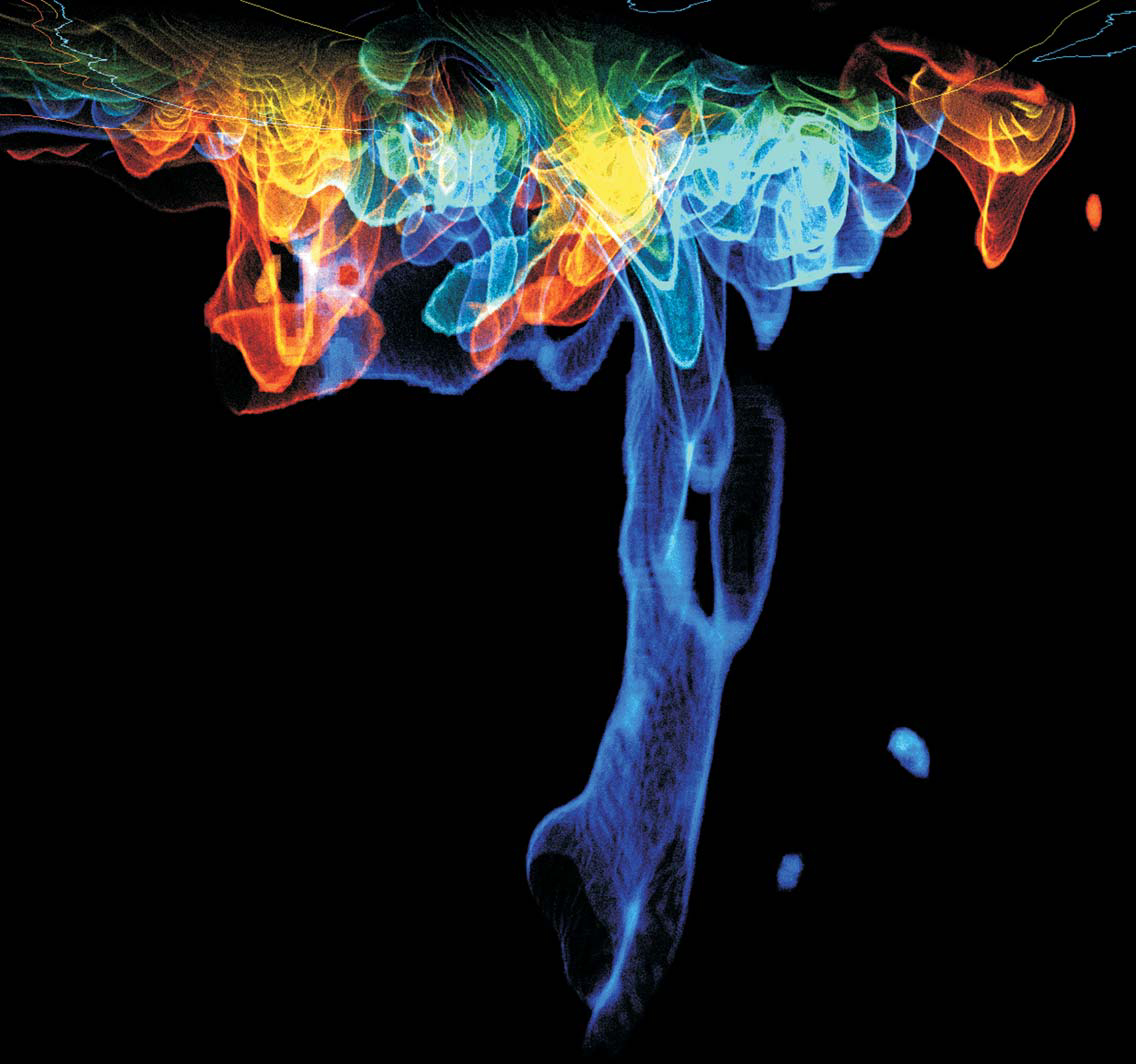Simulating a “big one”
DOI: 10.1063/1.2963021
The San Andreas Fault, at the boundary of the Pacific and North American tectonic plates, is the largest and most famous of California’s seismic faults, though others abound throughout the state. Speculation over when and where the next big earthquake will hit is not only fodder for Hollywood, but also serious business for researchers, engineers, and policymakers.
Scientists at the Southern California Earthquake Center are looking into the questions of the next quake’s when and where—and what the resulting ground motion will be. Led by Tom Jordan at the University of Southern California, the SCEC is a collaboration comprising more than 600 researchers from 60 institutions worldwide. Among the SCEC’s projects is TeraShake, which uses the computing and data-handling resources of the San Diego Supercomputer Center to simulate ruptures along the southern San Andreas Fault and other regional seismic events. From an underground perspective facing south (into the page), this image plots the three-dimensional velocity wavefield to a depth of 80 km off the Southern California coastline, from Los Angeles to the Baja Peninsula, as shock waves travel under the ocean, passing Catalina Island (outlined in blue, top right). It shows how the strongest ground motions are trapped and amplified in the low-velocity regions near the surface. Red and yellow regions are areas of compression; blue and green, dilation. The two thin yellow lines at the top of the image indicate faults; blue lines, shoreline. Simulations such as this are complicated by the vast range of length scales, from 200 meters to hundreds of kilometers, and the immense volume of data produced. The TeraShake simulations are described by Kim Olsen and coauthors in the Bulletin of the Seismological Society of America, 98, 1162 (2008).
To submit candidate images for Back Scatter, visit http://www.physicstoday.org/backscatter.html

Image courtesy of Marcus Thiebaux, Information Sciences Institute, USC; Kim Olsen, San Diego State University; and Yifeng Cui, San Diego Supercomputer Center.

